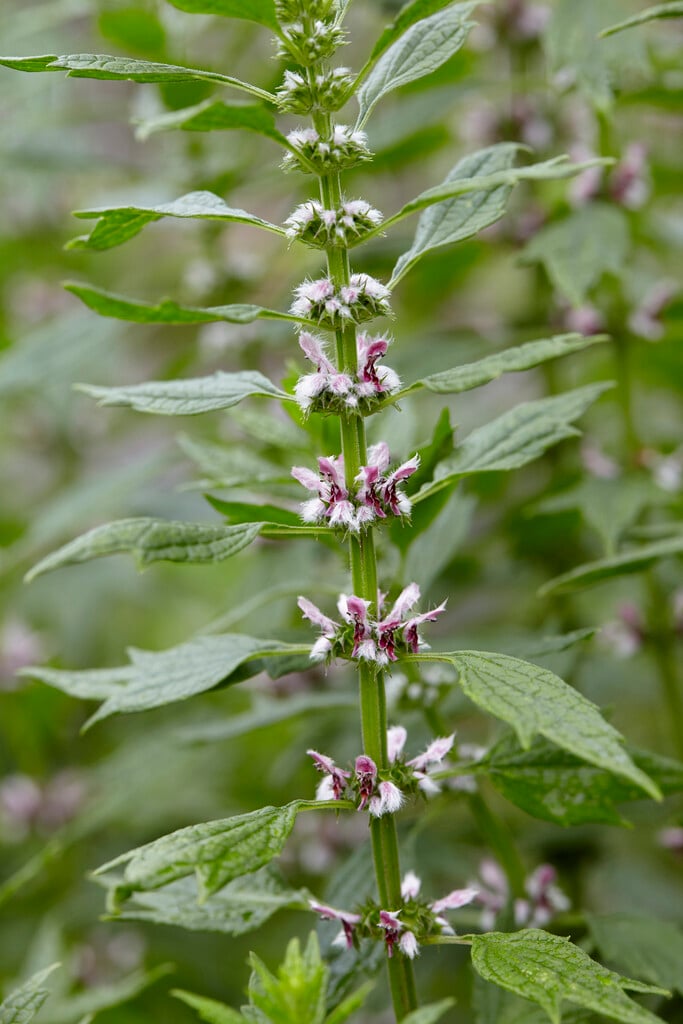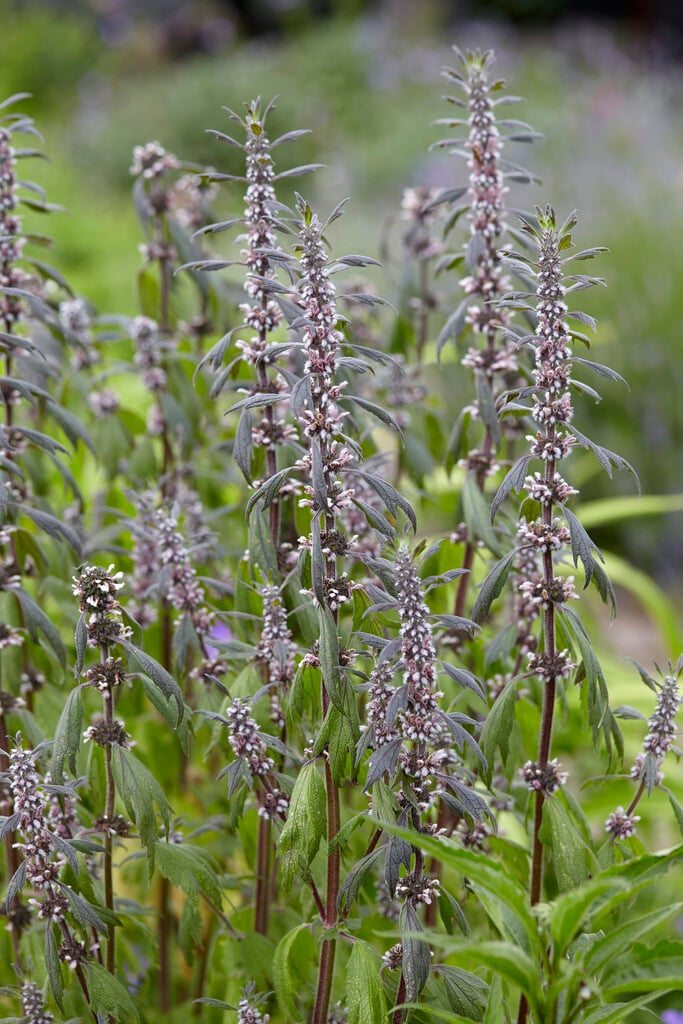Leonurus cardiaca
motherwort
A deciduous, herbaceous perennial wildflower with deeply-lobed palmate green foliage and whorls of purple-pink to white flowers with purple-spotted lips around a central stem which appear in the summer. Known for it's historical use in medicine for heart-related issues and also a great source of nectar for pollinating insects. Honey made from the nectar of this plant has a strong, mint-like flavour
Size
Ultimate height
1.5–2.5 metresTime to ultimate height
2–5 yearsUltimate spread
0.5–1 metresGrowing conditions
Moisture
Moist but well–drainedpH
Acid, Alkaline, NeutralColour & scent
| Stem | Flower | Foliage | Fruit | |
| Spring | Green | |||
|---|---|---|---|---|
| Summer | Purple Pink White | Green | ||
| Autumn | ||||
| Winter |
Position
- Partial shade
Aspect
East–facing or North–facing or South–facing or West–facing
Exposure
Sheltered Hardiness
H4Botanical details
- Family
- Lamiaceae
- Native to GB / Ireland
- No
- Foliage
- Deciduous
- Habit
- Bushy
- Name status
Correct
- Plant range
- Europe, from Scandinavia to N Spain, Italy and Greece, naturalised in S Britain
How to grow
Cultivation
Grow from seed (these may benefit from being cold-stratified) or by rooted cuttings taken from established plants. Grow in well-drained soil in sun or part shade
Propagation
Prefers well-drained, poor soil but wiill grow almost anywhere and can cope with heavy soils
Suggested planting locations and garden types
- Architectural
- Cottage and informal garden
- Wildflower meadow
- Wildlife gardens
- Low Maintenance
- Flower borders and beds
Pruning
Cut back after flowering
Pests
Generally pest-free
Diseases
Generally disease-free
Get involved
The Royal Horticultural Society is the UK’s leading gardening charity. We aim to enrich everyone’s life through plants, and make the UK a greener and more beautiful place.

